2. Thermodynamic Properties of a Pure Substance
2.3 Phase diagrams
A pure substance may exist in any of the three phases: solid, liquid, and vapour, at certain temperatures and pressures. When its temperature or pressure changes, a substance may transition from one phase to another. For example, liquid water at 1 atm turns into ice when its temperature drops to the freezing point of 0oC. The equilibrium state of a pure substance and its phase transitions are commonly illustrated in phase diagrams. Figure 2.3.1 is a three-dimensional
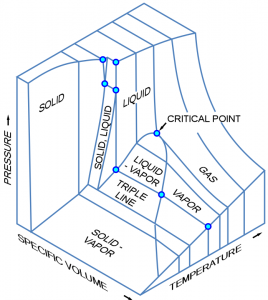
2.3.1 P-T diagram
Figure 2.3.2 shows a generic pressure-temperature,
The single phase regions are labeled as solid, liquid, and vapour or gas in the
In the
The curve that represents the transition between the solid and liquid phases is called fusion line. Each point on the fusion line has a unique set of temperature and pressure called freezing temperature and freezing pressure, respectively. Along the fusion line, the substance may exist as a saturated liquid, a solid, or a two-phase solid-liquid mixture.
The curve below the triple point is called sublimation line, across which a substance can change directly from solid to vapour or vice versa without a transition through the liquid phase. Each point on the sublimation line represents an equilibrium state, at which the substance may exist as a saturated vapour, a solid, or a two-phase solid-vapour mixture.
The vaporization, fusion and sublimation lines meet at the triple point, at which the three phases, solid, liquid, and vapour, coexist in equilibrium. Appendix F lists the triple points of a selection of pure substances. It is noted, from Figure 2.3.2, that the liquid phase cannot exist below the triple point pressure. When a substance is at a pressure lower than the triple point pressure, it can only transition between the solid and vapour phases.
The critical point in the
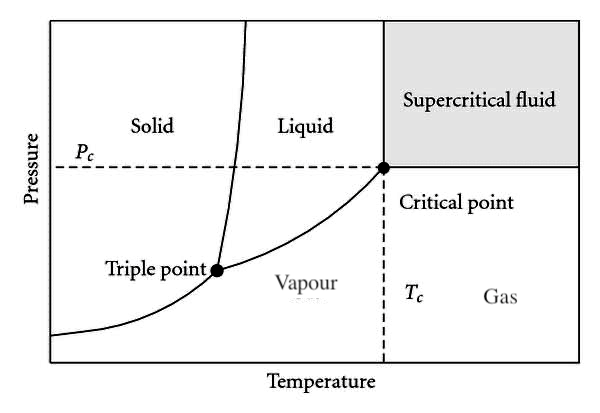
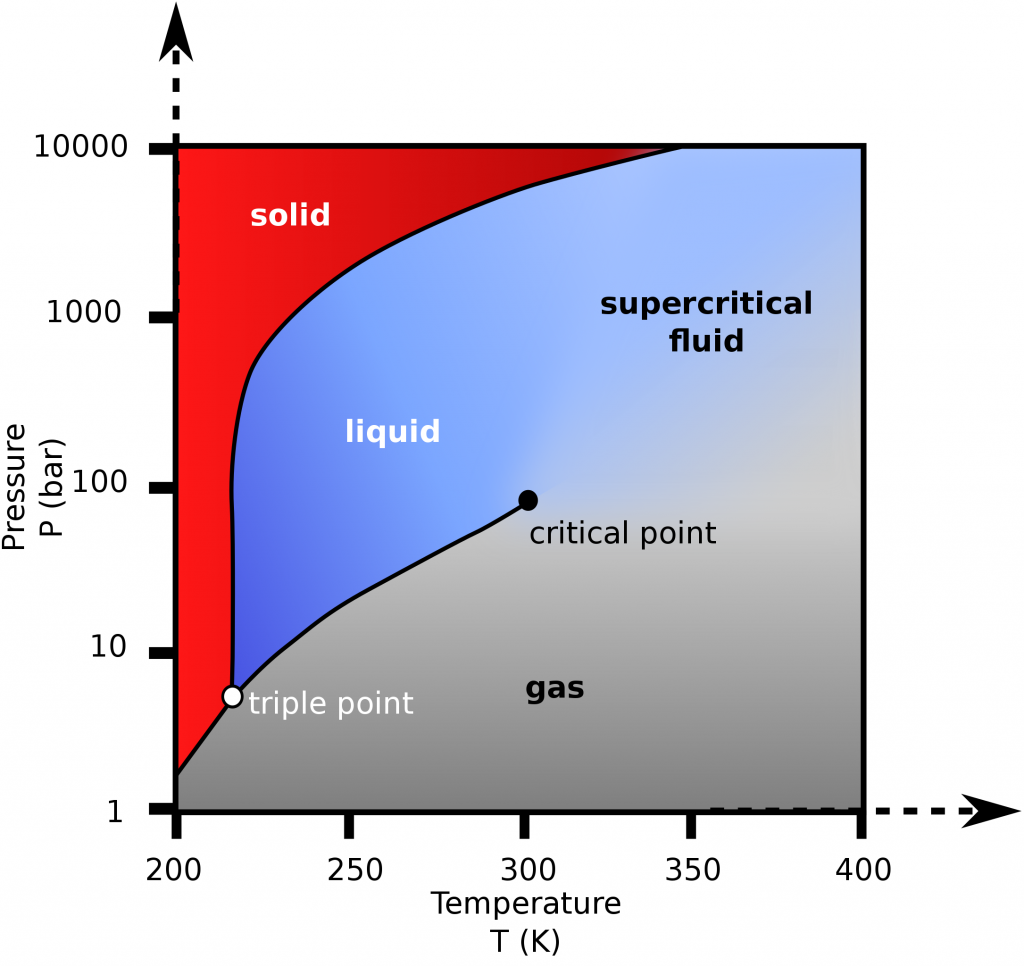
Example 1
Review the P-T diagram for CO2, as shown in Figure 2.3.3.
- What is the lowest pressure for liquid CO2 to exist?
- Is CO2 at 100 bar, 275 K a solid, liquid or gas?
- CO2 at 100 bar, 275 K is cooled in an isobaric process. At approximately what temperature will CO2 start to change its phase? Will it change to a liquid or a solid? Draw the process line.
Solution:
- From the P-T diagram, the liquid phase can only exist when the pressure is great than the triple point pressure. From Appendix F, Table F1, CO2 has a triple point pressure of 517 kPa and a triple point temperature of 216.55 K (−56.60 °C), respectively; therefore, the lowest pressure for liquid CO2 to exist is 517 kPa.
- From the P-T diagram, Figure 2.3.e1, CO2 at 100 bar, 275 K is in the liquid phase.
- The isobaric process is shown as the horizontal, yellow line with a constant pressure of 100 bar, see Figure 2.3.e1. At approximately 220 K, the isobaric process line meets the fusion line, and the liquid CO2 starts to change to solid CO2.
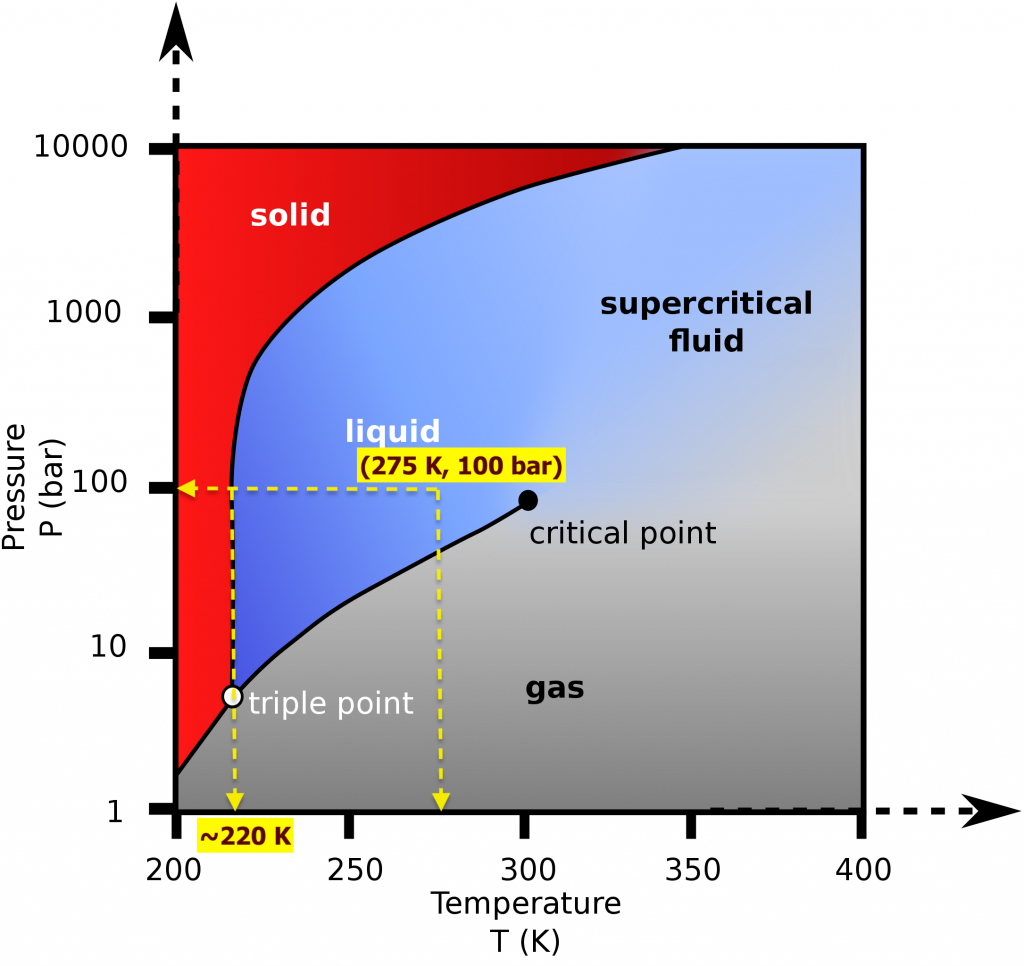
2.3.2 T-v and P-v diagrams
In many thermodynamic cycles, a working fluid experiences phase changes between liquid and vapour in the subcritical zone, such as water in a steam power plant and R134a in a vapour-compression refrigeration system. The liquid-vapour phase change can be illustrated in the
It is important to note that the liquid state is commonly called compressed liquid or subcooled liquid, and the vapour state is commonly called superheated vapour. In the liquid-vapour, two-phase region, the corresponding isothermal and isobaric processes coincide and remain as horizontal lines. This indicates that, during the phase change process, both temperature and pressure remain constant, i.e.,
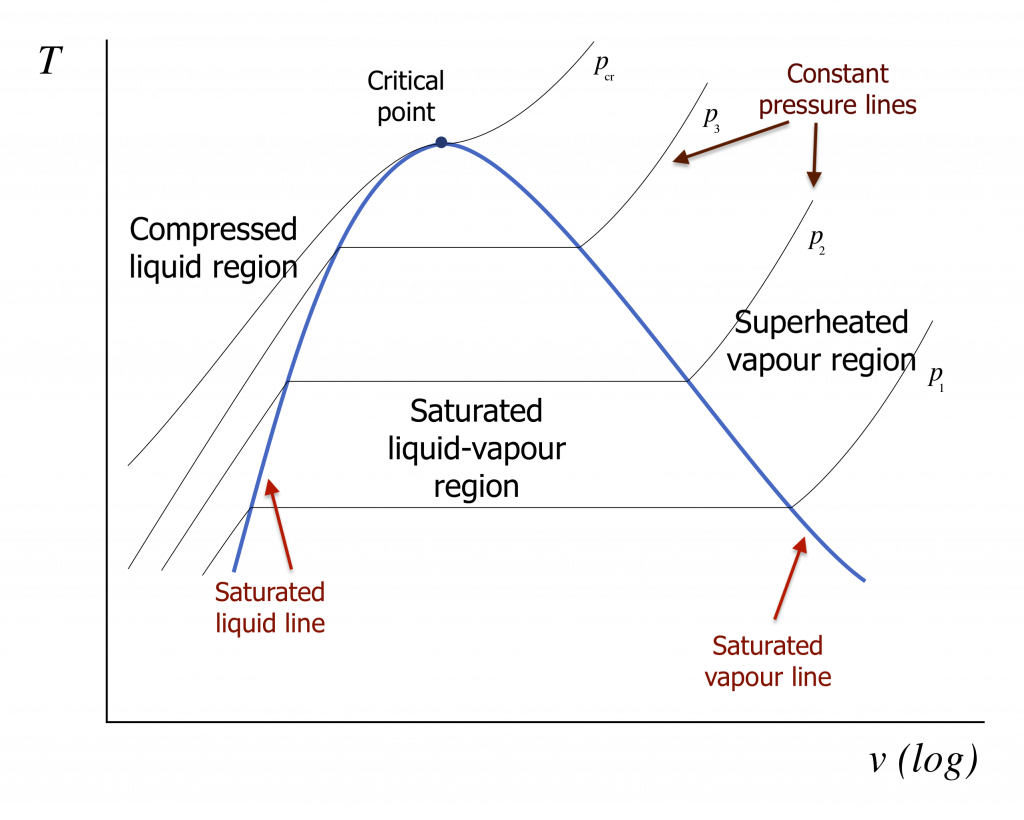
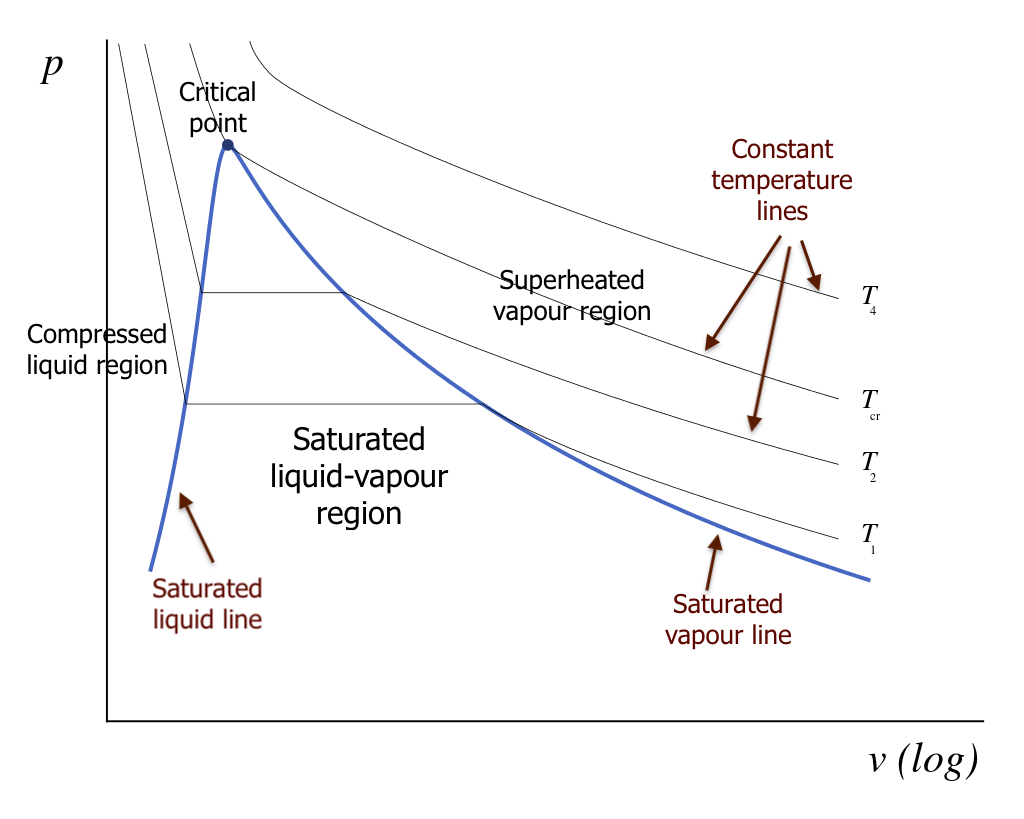
2.3.3 The saturated liquid-vapour two-phase region
For a saturated liquid-vapour, two-phase mixture, we define quality x to denote the mass fraction of the saturated vapour in the mixture.
where
With the concept of quality, we can calculate the specific volume, specific internal energy, specific enthalpy, and specific entropy for a saturated liquid-vapour, two-phase mixture by using the following equations.
where
Practice problems
Media Attributions
- P-v-T phase diagram © Д.Ильин: vectorization is licensed under a CC0 (Creative Commons Zero) license
- P-T diagram © Xia Liao, Haichen Zhang, and Ting He is licensed under a CC BY (Attribution) license
- P-T Diagram for CO2 © Rifleman_82 is licensed under a CC0 (Creative Commons Zero) license
- P-T diagram for CO2 (example 1 solution) © Rifleman_82 is licensed under a CC0 (Creative Commons Zero) license
- T-v diagram © Olivier Cleynen is licensed under a CC0 (Creative Commons Zero) license
- P-v diagram © Olivier Cleynen is licensed under a CC0 (Creative Commons Zero) license
Phase diagram is a graphical representation of a substance's state (solid, liquid or vapour) under different conditions of temperature and pressure.
Single phase refers to the solid, liquid or vapour (or gaseous) phase that a substance exists at a certain condition.
The vapourization line refers to the curve that represents the transition between the liquid and vapour phases of a substance in a phase diagram.
Fusion line is a curve that represents the transition between the solid and liquid phases of a substance.
The sublimation line is the curve that represents the transition between the solid and vapour phases of a substance in a phase diagram.
The triple point refers to a unique state of a substance, at which the three phases, solid, liquid and vapour, coexist in equilibrium.

